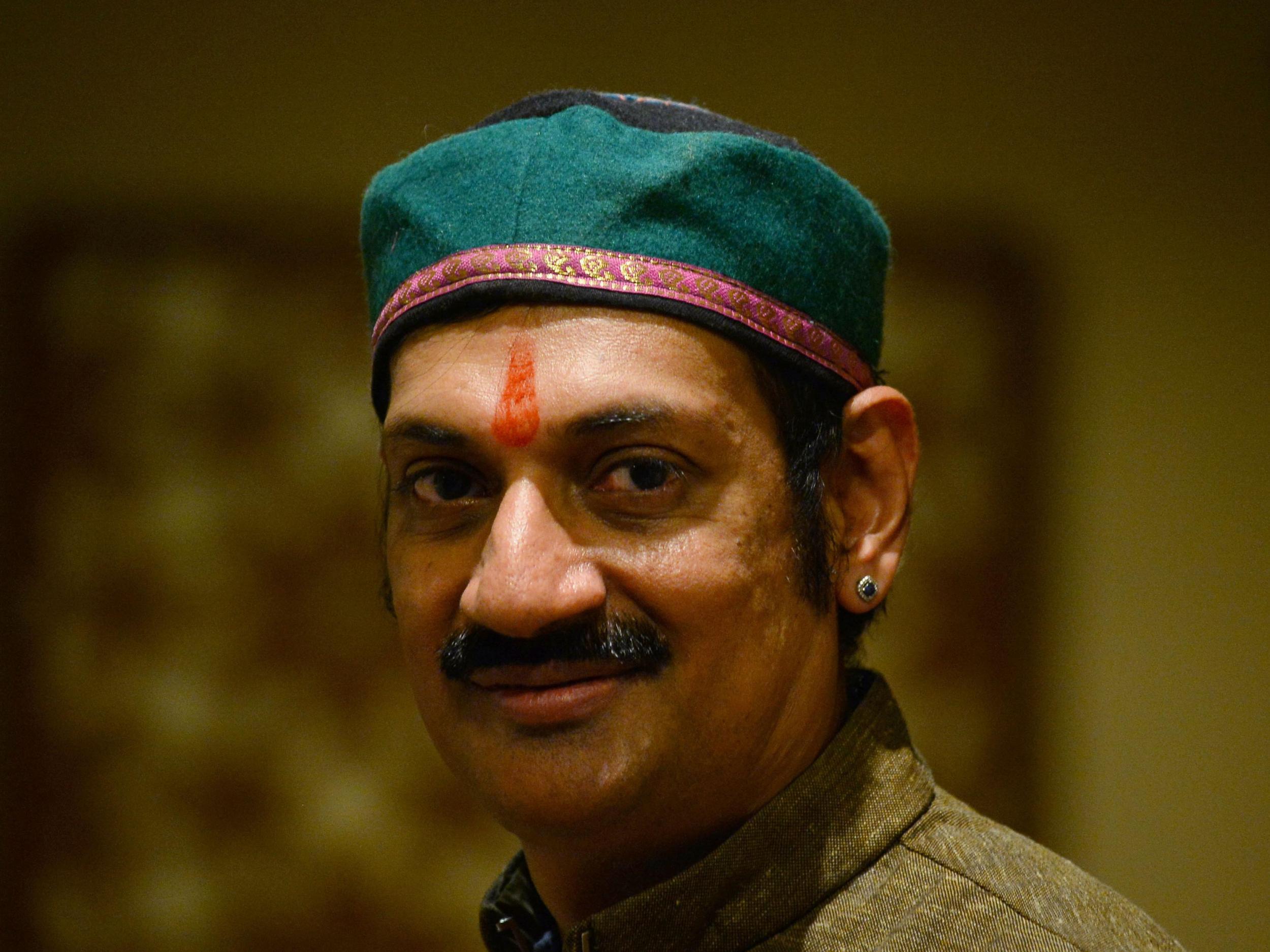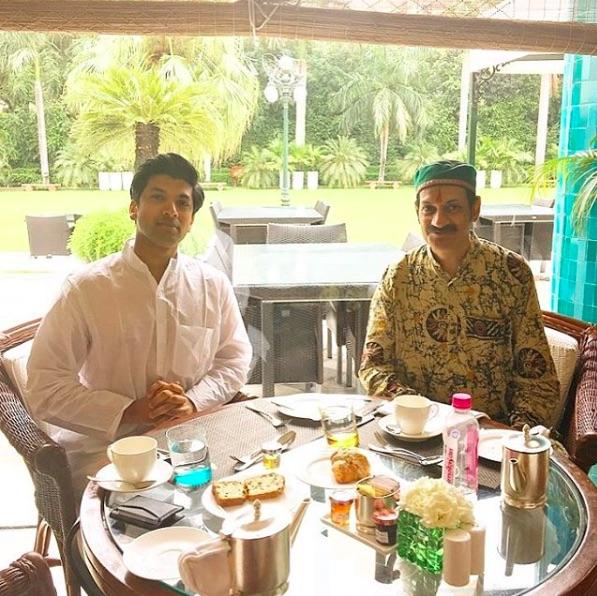India's only openly gay prince discusses coming out and turning his pink palace into a centre for at-risk LGBT+ people
‘People in the community tell me their mothers have threatened to kill themselves if they are gay. They do not want their mother to jump into a well so they are pressured to get married,’ says Prince Manvendra

Prince Manvendra Singh Gohil might have grown up in a vast and opulent rococo palace in prosperous Gujarat with servants responding to his every beck and call but it would be wrong to assume his life has been free of problems.
The Indian prince, who is the son and probable heir of the Maharaja of Rajpipla in Gujarat in western India, was forced to shroud his sexuality from public view for years. Marrying a princess of Jhabua State in Madhya Pradesh in 1991, Prince Manvendra lived a lie and his matrimony remained unconsummated for its entirety.
Unable to endure the secrecy, he eventually confided in his wife about his sexual orientation. Barely a year after the wedding she filed for divorce despite separation being virtually unheard of in India at the time and still massively taboo now.
Like many in India – where sex between people of the same gender is punishable by law – the 52-year-old kept his homosexuality a secret from everyone for many years after the divorce. Fortunately his wife kept her promise to never divulge his sexuality.
But this was not easy and in 2002 Prince Manvendra had a nervous breakdown and found himself in hospital. It was there that his psychiatrist told his parents he was gay. This did not go down well and his parents insisted his sexuality must be kept a secret. They tried to “cure” him with both medical and religious measures.
If this was not bad enough the prince’s life was thrown into yet further disarray and chaos after he publicly came out as gay. The revelation was not only breaking news all over India but also grabbed headlines worldwide. In his home state of Rajpipla, effigies of the prince were burned and people called for him to be robbed of his title and ostracised. His parents brought out public notices saying they wanted to publicly disown him and disinherit him from the ancestral property.
“Coming out in India is very difficult. There is so much stigma. Society doesn’t allow parents to accept it,” the prince, who is the first and only openly gay royal in India, tells The Independent.
“Parents blackmail their children and force them to get married to the opposite sex. People in the community tell me their mothers have threatened to kill themselves if they are gay. They do not want their mother to jump into a well so they are pressured to get married.”
The royal said homelessness is a massive problem in the LGBT+ community in India. “People in India are so attached to their parents they are not able to live without them. When they try and come out parents do not understand and disown their children and throw them out of the home. The children don’t know where to go and are homeless,” he said.
“I need to rescue these people who have been rendered homeless otherwise they will die, commit suicide, or get depressed.”
Prince Manvendra is not talking in vague, nebulous terms and actually has a solution in mind. The royal is going so far as to transform his 15-acre pink palace into a centre for vulnerable LGBT+ people.
The centre aims to deliver clinical services, financial support and skills training for young LGBT+ people so they are able to become financially independent from their families. He will run the centre with his community-based organisation The Lakshya Trust which he started to support gay men and educate people about the prevention of HIV/Aids.
“There are two aims. One is social empowerment and the other is economic empowerment,” he explains. “The idea is to teach people how to become self-reliant so they can earn their own living based on their skills and talents. There is a lot of discrimination which the community faces so we want people to feel confident.”
The royal, who says he has been thinking about the idea for 15 years, also plans to use the centre to offer free safe-sex seminars to young LGBT+ people across India and run workshops with parents who have accepted their children’s sexuality. He is constructing more buildings to house visitors to the centre who will be able to stay in shared accommodation.
The aptness of the palace being pink is not lost on Prince Manvendra. “Our city is called the pink city of Gujarat and most of the buildings are painted pink,” he explains. “It has been pink for almost 300 years now and I always say maybe one of my ancestors painted it pink because they knew one of their relatives would like it.”
He says the palace was visited by many Hollywood stars back in the day and that Ian Fleming, who wrote the James Bond series of spy novels, visited the palace as he was a friend of his great-grandfather’s.
But the prince is not getting the centre up and running on his own and has procured the support of Kanwar Amarjit Singh – a 28-year-old Indian royal who is also an LGBT+ activist.
Prince Manvendra is so appreciative of Mr Singh’s decision to help with funding he has named the centre after him – it will be called Hanumanteshwar Amar 1927. Mr Singh, who divides his time between India and London, describes the prince as his “mentor” and explains their ancestors were great friends.
Mr Singh, who runs a feminist art gallery near Kings Cross in London called Amar Gallery currently showing Guerrilla Girls artwork, was driven out of India at the age of just 20 after he spoke out about supporting gay rights – though he himself is heterosexual. The activist, who is the main funder and support of Prince Manvendra's LGBT centre, runs a grassroots network of activists in India that confronts the oppression of the LGBT+ community and women through education.
“We work on advocacy for LGBT+ and women’s rights,” Mr Singh says. “It makes me so angry the police in some townships are beating gay men and people for handing out condoms, and girls as young as four being forced into prostitution".
“We connected a decade ago and he has been a champion for LGBT+ rights since I have known him. I consider him as an ally,” Prince Manvendra chips in.

Over in India Prince Manvendra also emphasises the importance of education and uses his platform to speak to university students about LGBT+ issues. In fact, the royal has had something of a turnaround since coming out and being shunned by society after coming out.
He has not only been accepted by his family but has been on The Oprah Winfrey Show three times and even appeared on Keeping Up With The Kardashians.
“Oprah’s interview was a big turning point in my life,” he reflects. “The whole of society had turned against me but the moment I got invited on things changed. She was extremely nice to me, said she had interviewed many people in the last 25 years, but I was one of the most honest people she had ever met.”
Despite the progress Prince Manvendra has made and continues to make in India, it is worth remembering that Indian law continues to criminalise sexual acts between members of the same sex and homophobia remains deeply culturally ingrained. Nevertheless, the Supreme Court of India has ordered a review of the legislation later this year.
In Prince Manvendra’s view, the problem is rooted in Indian society’s attitude to sex as a whole. “It is a taboo to even speak about sex and there is no sex education in schools,” he says.
Ironically the prince, who campaigns for the reform of India’s anti-LGBT+ laws, says homosexual behaviour is far more accepted than heterosexual behaviour in the country. “Men are affectionate with each other but heterosexual behaviour is not accepted,” he explains. “Our country is a paradox in that way. It is very easy to get a room for same sex at a hotel but if a male and female want a room you have to prove the relationship.
“There are so many people in the closet living a double life; you’re supposed to live the way society wants you to live”.
Join our commenting forum
Join thought-provoking conversations, follow other Independent readers and see their replies
Comments